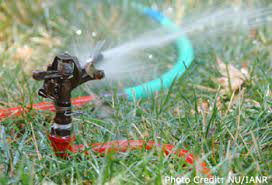CLICK HERE for the latest market quotes from the Iowa Agribusiness Network!
CLICK HERE for the latest market quotes from the Brownfield Ag News Network!
CLICK HERE for the latest market quotes from the Iowa Agribusiness Network!
CLICK HERE for the latest market quotes from the Brownfield Ag News Network!
The City of Atlantic’s Parks and Recreation Department Board will meet 5:15-p.m. Monday, at the Cedar Park Shelter (204 Cedar Street). On their agenda under action items/new business, are updates with regard to:
In his report to the Board, Parks and Rec Director Bryant Rasmussen will provide:
(Atlantic ) – Officials with Cass County/ISU Extension and Outreach report applications are now being accepted for anyone interested in the Iowa Master Gardener training, which will be offered 100 percent online in the fall. The training is available to anyone with computer access and includes 17 online modules.
The move to online means that Iowans can participate in the full training from the comfort of their home, or anywhere a reliable internet connection is available. As the training is self-paced, participants can work through the book chapters and online materials at their own pace, on their own time, making the training more accessible to local residents with busy schedules.
A total of 17 educational modules will be offered by Iowa State University Extension and Outreach, on topics that include houseplants, pollinators, vegetables, and perennial flowers. Each course module includes a book chapter, lecture video, online discussion board and a quiz. Through the online discussion board, trainees can connect to share ideas about how they plan to volunteer and what they are learning about different topics.
The Master Gardener program in Cass County is looking for people who are passionate about volunteering and gardening. No previous garden knowledge is required. The program equips participants to grow in knowledge about gardening best practices. After the training, Master Gardeners volunteer in their community, making contributions such as donating vegetables to food pantries, leading community beatification projects and maintaining demonstration gardens at local parks and county fairgrounds.
Iowa State has offered Master Gardener training since 1977, engaging more than 15,000 people in learning about gardening best practices. This year, the course is being offered online via the Canvas online learning system. In addition to the online workshops, Cass County Extension plans to offer several hands-on workshops for trainees throughout the fall so they can meet other local class members and gain hands-on experiences with class topics.
Applicants for the 2021 training must apply by Thursday, July 1. The online class begins in mid-August. Participants registering online will receive materials in the mail prior to the start of the course. Apply and learn more about the program online at www.extension.iastate.edu/mastergardener.
The fee for the training is $195 and covers all class materials. Because Master Gardener volunteers work with many community partners, applicants will also be required to successfully pass a background screen before being accepted into the program. At the end of the course, there is one open-book test that participants will need to pass to complete the course and receive their certificate.
After completion of the MG Training, participants have 13 months to complete 40 volunteer hours. Annually, Master Gardener status can be maintained with 20 volunteer hours per year and ten hours of continuing education. Cass County has an active Master Gardener group that participates in many projects throughout the year, so opportunities to learn and volunteer are plentiful! Examples of local Master Gardener volunteer projects include educational workshops and seminars, maintaining community parks and demonstration gardens, and donating fresh produce to food pantries.
Iowans who want professional development training for their job and who do not plan to volunteer can participate in the ProHort option, for a fee of $550. No background check is required for this option.
For more information, contact the Cass County Extension Office at 712-243-1132, or email Cass County Extension Director and Master Gardner Coordinator Kate Olson at keolson@iastate.edu. Online program registration can be completed at www.extension.iastate.edu/mastergardener.
(Radio Iowa) – The new map from the U-S Drought Monitor shows worsening conditions across Iowa. Only five percent of the state is shown as having normal conditions, all in the southeast, while drought gained more ground practically everywhere else. Parts of eastern and far southwestern Iowa are in the abnormally dry category, but the majority of the state’s in drought.
A week ago, 56-percent of Iowa was in moderate to severe drought, now, it’s 76-percent. Severe drought covers about 40 of the state’s 99 counties, including virtually all of northern Iowa and much of the central region.
A heat advisory is posted for much of the state today (Thursday), as highs are forecast to reach the upper 90s to around 100 degrees, with heat indices in southwest Iowa climbing to 107.
Cass County: Corn $6.64 Beans $14.57
Adair County: Corn $6.61 Beans $14.60
Adams County: Corn $6.61 Beans $14.56
Audubon County: Corn $6.63 Beans $14.59
East Pottawattamie County: Corn $6.67 Beans $14.57
Guthrie County: Corn $6.66 Beans $14.61
Montgomery County: Corn $6.66 Beans $14.59
Shelby County: Corn $6.67 Beans $14.57
Oats $2.97 (always the same in all counties)
(Radio Iowa) – Iowa farmers who are still working to recover from losses caused by the derecho last August would likely see benefits in a bill being introduced by Iowa Congressman Randy Feenstra. The Republican from Hull says the legislation would bring derecho relief through an existing federal program that targets farmers and ranchers who were hit by -other- natural disasters last year. “The program is out there already through the USDA called the WHIP Plus program, it’s a wildfire and hurricane indemnity fund,” Feenstra says. “What that fund is, it’s strictly for wildfires and hurricanes, so what the bill is simply doing is adding derechos and just for 2020 disasters.”
Feenstra tried to attach a derecho relief package to the 1.9-trillion dollar reconciliation bill last year, but failed. He says Democrats have pledged to help support the measure now that it’s a free-standing bill. “They sort of promised, saying, ‘Hey, we can’t take your amendment because we’re not taking any amendments, but if you do something else, we’re going to help,'” Feenstra says. “So now we’re pretty excited that we’ve got a stand-alone bill, working with the Ag Committee, working with everybody, hoping to get this one over the finish line.” Feenstra says derecho assistance is still direly needed and could make the difference of some producers staying in business or going belly up.
“It’s very significant for all of the farming community in central Iowa and so forth,” Feenstra says. “I’ve had a lot of producers talk to me saying, ‘Boy, I’m on the verge of not making it.’ We can only hope we can get this thing passed and get some help and subsidies to those who lost everything in the derecho.” The August 10th derecho was the most destructive thunderstorm in United States’ history, causing more than 13-billion dollars damage, most of it in Iowa. It packed peak winds of 140 miles-an-hour, the equivalent of an E-F-3 tornado or a category-four hurricane.
Cass County: Corn $6.66 Beans $14.69
Adair County: Corn $6.63 Beans $14.72
Adams County: Corn $6.63 Beans $14.72
Audubon County: Corn $6.65 Beans $14.71
East Pottawattamie County: Corn $6.69 Beans $14.69
Guthrie County: Corn $6.68 Beans $14.73
Montgomery County: Corn $6.68 Beans $14.69
Shelby County: Corn $6.69 Beans $14.69
Oats $2.97 (always the same in all counties)
(Radio Iowa) – A lush, green lawn is a source of pride for many Iowans and this prolonged drought is forcing many of us to quit worrying about having the best lawn on the block — and let the grass go dormant. Adam Thoms, a horticulture professor at Iowa State University and a turfgrass extension specialist, says it’s stressful for grass to shake up the watering schedule, so he’s telling Iowans if their lawns are already turning brown, just let them go. “Putting them in and out of dormancy by watering and stopping and then restarting is really hard on the turf,” Toams says. “It’s okay to go into dormancy. The grass can last for 30 to 60 days with that straw brown color and it won’t hurt it at all. It’ll come back out in the fall.”
Des Moines Water Works, which serves more than 500-thousand customers in 18 central Iowa communities, is asking residents to voluntarily conserve and cut back on watering by 25-percent. Last Friday, demand for the utility hit 90-percent of production capacity. Toams predicts many folks in the Des Moines metro -will- cut back, as requested. “There’s some research out there that shows when they ask for those voluntary commitments that people do step up and follow those,” Toams says. “We always suggest that you don’t water every day anyway. It’s better to do a deep and infrequent watering. That forces the turf roots to go deeper to chase that water deep in the soil, so, that’s an okay thing.” 
Some people turn on the sprinklers for hours at a time and let them saturate the grass, but Toams says most lawns don’t need more than an inch of water in a week’s time. “If you can break that down over two or three times a week — that one inch — that’s fine,” Toams says. “If we get a week like next week’s coming up that they’re saying it’s going to be a little cooler, you can dial that back to eight-tenths of an inch or something like that. And of course, if we get any kind of rain, count that against your inch.” If you’ve laid sod within the past year or are trying to grow new grass from seeds, you’re in for what could be an expensive, frustrating challenge.
“Those are the ones that are going to get hurt by this drought. They’re the ones that need regular watering just because they don’t have a deep root system,” Toams says. “We do need to make sure that those get regular waterings. If you’re thinking about overseeding or adding seed to your yard, just wait. Right now is not the time. It’s too hot and it’s obviously too dry.”
Plus, given the weather patterns, he says more water restrictions are likely looming. If the dry weather lasts through summer and grass has been dormant up to six weeks, apply an inch or so of water in a single application. The grass won’t green up, but it’ll keep the roots alive. If the drought continues, water in that fashion every two weeks, but not enough to bring it out of dormancy. Toams suggests Iowans give their lawns a good dose of fertilizer this fall to help them recharge and ideally, come back strong next spring.
Officials with Guthrie County/ISU Extension and Outreach report the US Sunbeams 4-H Club was the winner of a “Random Acts of Kindness” drawing. The club won $257.50 from one of the members aunt’s workplace. The club in-turn used the money to “Pay It Forward” with the 15 Summer Activity Bags.

Meredith Arganbright presenting 15 Summer Activity Bags to Rhonda Huggins of New Opportunities Family Development Center in Guthrie Center. (Photo & information submitted)
Cass County: Corn $6.72 Beans $14.85
Adair County: Corn $6.69 Beans $14.88
Adams County: Corn $6.69 Beans $14.84
Audubon County: Corn $6.71 Beans $14.87
East Pottawattamie County: Corn $6.75 Beans $14.85
Guthrie County: Corn $6.74 Beans $14.89
Montgomery County: Corn $6.74 Beans $14.87
Shelby County: Corn $6.75 Beans $14.85
Oats $3.00 (always the same in all counties)
Additional information can be found here.
(Radio Iowa) – Iowa State University Extension crop specialist, Joel DeJong, says northwest Iowa crops are showing signs of stress from the dry conditions. He says they need around 25 inches of moisture during the crop development stage. “We still need to have about 12 to 15 inches of rainfall during this season. You know, if we have slightly about average we’re probably going to reach that — otherwise, we are going to put some stress on our yield potential through the year,” DeJong says.
DeJong says stress is already showing up in the corn leaves.”If you take a look at the cornfields recently, you’ll see that almost every day we have a lot of cornfields rolling,” according to DeJong. “And it is an indicator that the root systems of those corn plants — even if there is water in that soil — the root systems right now aren’t deep enough to keep up with daily demand with low humidity and high temperature.” He says the rolling has been evident the last week in the afternoons and some mornings during the mid-90 degree days. DeJong says the humidity that we try to avoid is a good thing out in the field.
“It’s kind of unique to have 20 to 25 percent humidity and 90-some degree temperatures. That makes it seem a little more cooler for humans — but that is the opposite of what we want to see for a crop,” Dejong explains. “We want to see high humidity to go with those temperatures if they are going to be that high, because high humidity means less water demand in those plants.” The crops specialist says if the issue continues, farmers may see a drastic yield loss. The corn ear now is starting to fill in rows. “All this stress is probably reducing some of the rows we are going to have in some of those ears — might only be a few rows less, maybe it’s a few more. We still have the potential to continue to form the length of that ear all the way to the length of that corn. We’re still in that process,” he says.
DeJong says the next thirty days will be critical to the corn development as the corn begins to pollinate. He says soybeans are also showing some signs of stress, but soybeans have a way to delay the need for moisture until later in the year.